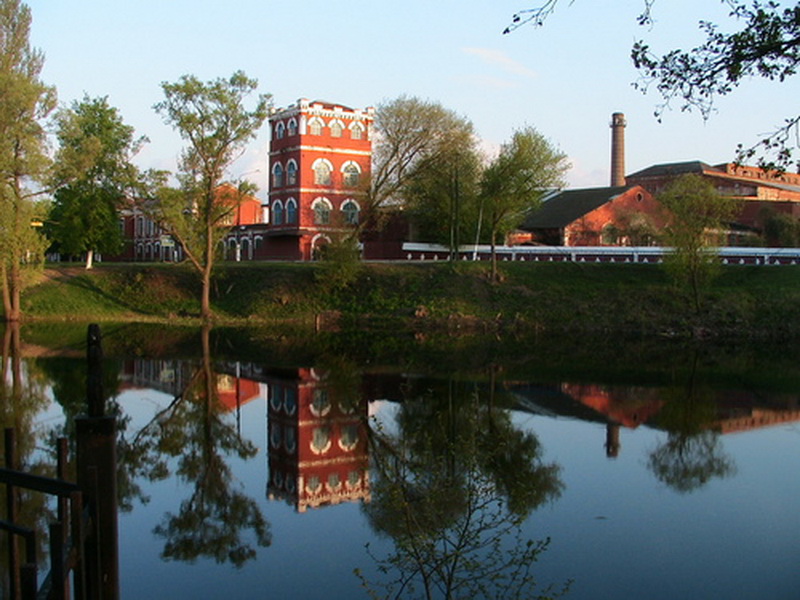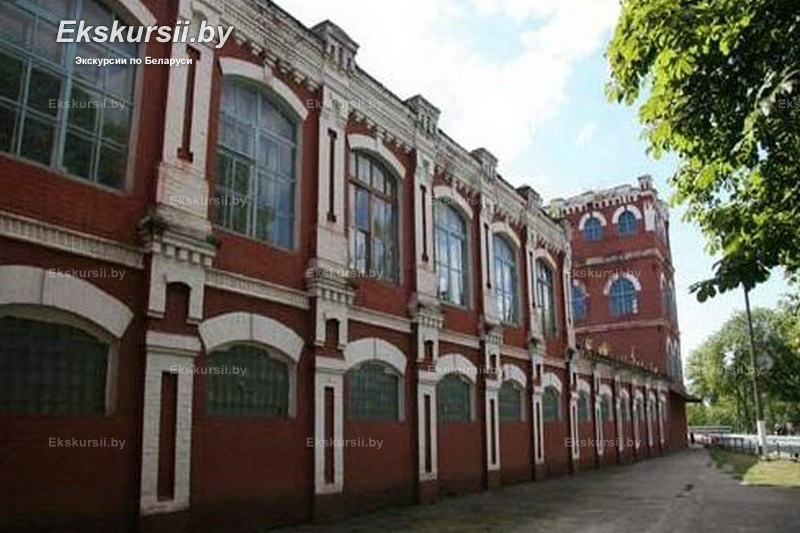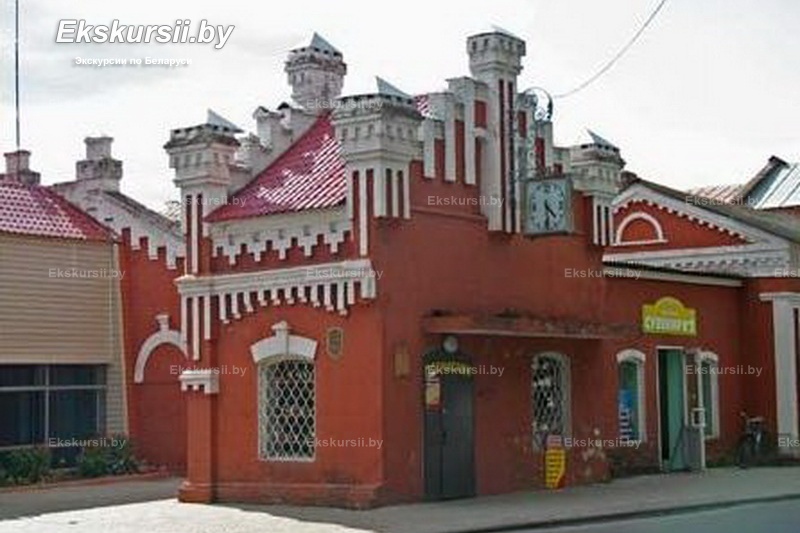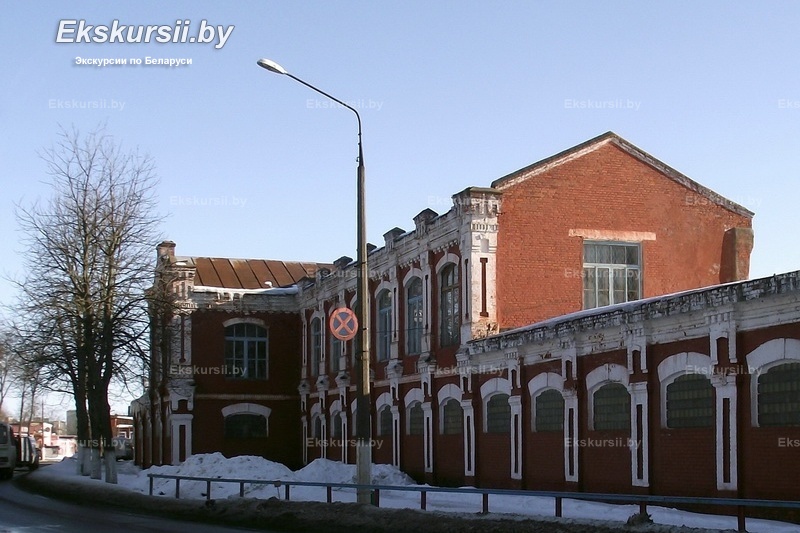History
The history of the enterprise begins in 1870, when Prince Fyodor Ivanovich Paskevich initiated the establishment of a wood pulp factory in Dobrush. The following year, it was transformed into a paper mill. A significant contribution to the development of the factory was made by Anton Ignatievich Stulginsky, who became its director in 1877. Under his leadership, technical modernization took place, including the introduction of innovations such as the first electric lighting in Belarus. In the pre-revolutionary period, the mill became one of the largest in the Russian Empire. During the Soviet era, the enterprise was not only restored after the war but also significantly expanded. Since 2010, the factory has been operating as a branch of the “Belarusian Wallpapers” holding.
Architecture
The architectural appearance of the complex is distinguished by its expressiveness and stylistic unity. The administrative building features an irregular layout and emphasized verticality due to the corner towers. The production buildings are made of brick; their façades are articulated with flat pilasters and decorated with ornamental bands beneath the cornices. The gatehouse includes arched windows with trim and a keystone, giving it a ceremonial look. The compositional dominant of the complex is a tall corner tower with semicircular windows. The buildings’ architecture is a fine example of pseudo-Gothic style in industrial construction in Belarus.



